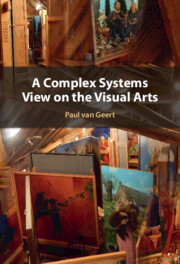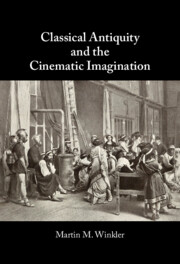Refine search
Actions for selected content:
30 results

My Own Past
- Afrodescendant Contributions to Cuban Art
-
- Published online:
- 30 September 2025
- Print publication:
- 18 September 2025
Preface
-
- Book:
- My Own Past
- Published online:
- 30 September 2025
- Print publication:
- 18 September 2025, pp xxv-xxviii
-
- Chapter
- Export citation
Chapter 2 - Vienna
- from Part I - Schoenberg in Place
-
-
- Book:
- Schoenberg in Context
- Published online:
- 04 September 2025
- Print publication:
- 04 September 2025, pp 10-17
-
- Chapter
- Export citation
Introduction
-
- Book:
- Teaching the Arts
- Published online:
- 28 July 2025
- Print publication:
- 06 August 2025, pp 1-2
-
- Chapter
- Export citation
Chapter 8 - Learning in visual arts
- from Part 2 - What: the arts learning areas
-
- Book:
- Teaching the Arts
- Published online:
- 28 July 2025
- Print publication:
- 06 August 2025, pp 235-278
-
- Chapter
- Export citation

Teaching the Arts
- Early Childhood and Primary Education
-
- Published online:
- 28 July 2025
- Print publication:
- 06 August 2025
-
- Textbook
- Export citation
Chapter 17 - Lady Gregory
- from Part III - Collaborators and Critics
-
-
- Book:
- Sean O'Casey in Context
- Published online:
- 23 June 2025
- Print publication:
- 10 July 2025, pp 182-191
-
- Chapter
- Export citation
Chapter 11 - The Visual and Plastic Arts
- from Part II - Intellectual, Cultural, and Political Contexts
-
-
- Book:
- Percy Shelley in Context
- Published online:
- 17 April 2025
- Print publication:
- 24 April 2025, pp 82-90
-
- Chapter
- Export citation

A Complex Systems View on the Visual Arts
-
- Published online:
- 20 March 2025
- Print publication:
- 03 April 2025
24 - Papal Patronage and the Arts: From the Early Christian Period to the Twentieth Century
- from Part IV - Education, Culture, Arts
-
-
- Book:
- The Cambridge History of the Papacy
- Published online:
- 28 February 2025
- Print publication:
- 20 March 2025, pp 681-702
-
- Chapter
- Export citation

Classical Antiquity and the Cinematic Imagination
-
- Published online:
- 15 February 2024
- Print publication:
- 22 February 2024
2 - Why Linguistic Landscape?
-
- Book:
- Linguistic Landscapes
- Published online:
- 08 June 2023
- Print publication:
- 22 June 2023, pp 27-50
-
- Chapter
- Export citation
The labour of visual art in Western Australia
-
- Journal:
- The Economic and Labour Relations Review / Volume 25 / Issue 1 / March 2014
- Published online by Cambridge University Press:
- 01 January 2023, pp. 99-114
-
- Article
- Export citation
6 - The Uptake of Decolonization
-
- Book:
- The Decolonization of Knowledge
- Published online:
- 22 June 2022
- Print publication:
- 30 June 2022, pp 147-171
-
- Chapter
- Export citation
28 - Arts Education and the Learning Sciences
- from Part V - Learning Disciplinary Knowledge
-
-
- Book:
- The Cambridge Handbook of the Learning Sciences
- Published online:
- 14 March 2022
- Print publication:
- 07 April 2022, pp 560-578
-
- Chapter
- Export citation
14 - Reception History of the Gospels
- from Part III - The Afterlife of the Gospels
-
-
- Book:
- The Cambridge Companion to the Gospels
- Published online:
- 10 August 2021
- Print publication:
- 19 August 2021, pp 281-300
-
- Chapter
- Export citation
Black Brazilians on the Move: Keynote Address, Collegium For African Diaspora Dance, Duke University, 2020
-
- Journal:
- Dance Research Journal / Volume 53 / Issue 2 / August 2021
- Published online by Cambridge University Press:
- 25 October 2021, pp. 124-129
- Print publication:
- August 2021
-
- Article
- Export citation
31 - Kurdish Art and Cultural Production
- from Part VI - Art, Culture and Literature
-
-
- Book:
- The Cambridge History of the Kurds
- Published online:
- 13 April 2021
- Print publication:
- 22 April 2021, pp 775-802
-
- Chapter
- Export citation
Chapter 7 - Visual Arts
- from Part II - Culture and Society
-
-
- Book:
- Ibsen in Context
- Published online:
- 23 April 2021
- Print publication:
- 15 April 2021, pp 55-64
-
- Chapter
- Export citation
Chapter 1 - Context I
-
- Book:
- Rediscovering Stanislavsky
- Published online:
- 12 November 2019
- Print publication:
- 21 November 2019, pp 1-42
-
- Chapter
- Export citation
